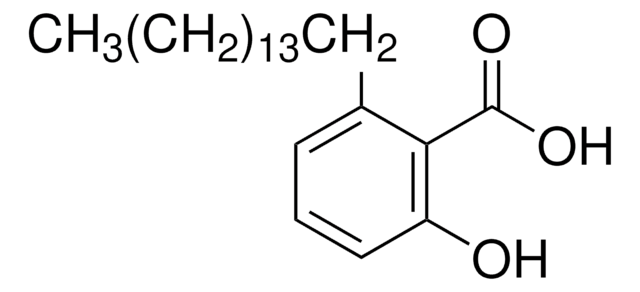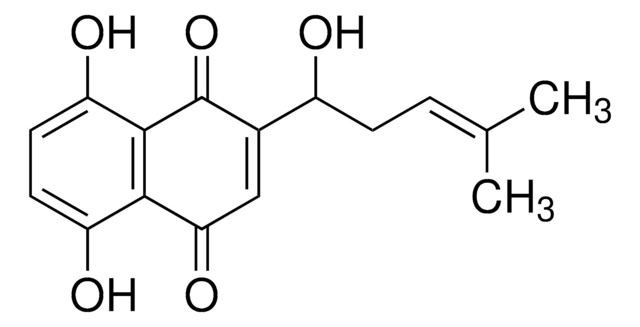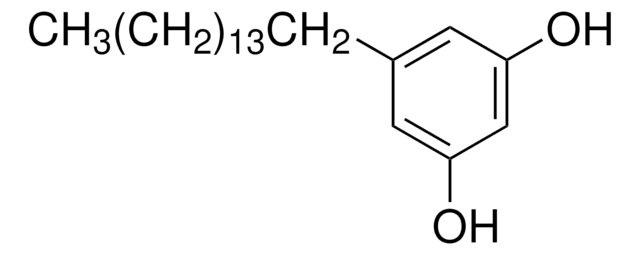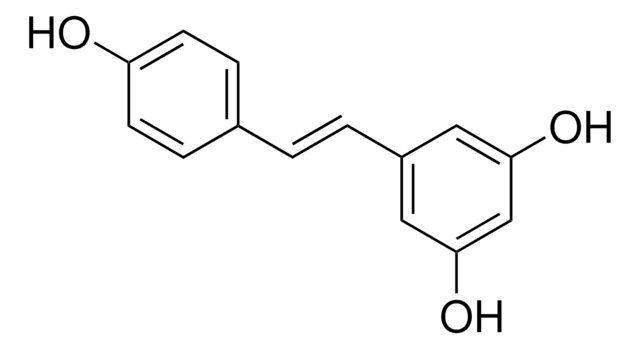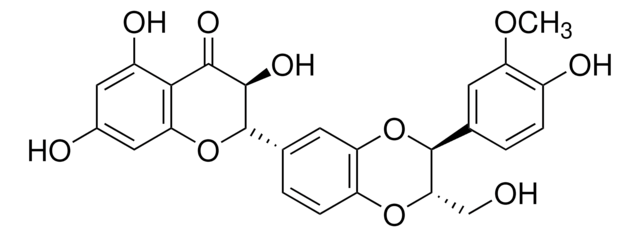172050
Kwas anakardowy
The Anacardic Acid, also referenced under CAS 16611-84-0, modulates the biological activity of Anacardic. This small molecule/inhibitor is primarily used for Cell Structure applications.
Synonim(y):
AA, kwas 2-hydroksy-6-pentadecylobenzoesowy, kwas 6-pentadecylosalicylowy, aktywator kinazy Aurora, inhibitor acetylotransferazy histonowej III, inhibitor SUMOylacji II, inhibitor HAT III, inhibitor p300/CBP III, inhibitor PCAF I
About This Item
Polecane produkty
Poziom jakości
Próba
≥95% (HPLC)
Formularz
solid
producent / nazwa handlowa
Calbiochem®
warunki przechowywania
OK to freeze
protect from light
kolor
white
rozpuszczalność
DMSO: 10 mg/mL
ethanol: 10 mg/mL
methanol: 10 mg/mL
Warunki transportu
ambient
temp. przechowywania
2-8°C
ciąg SMILES
Oc1c(c(ccc1)CCCCCCCCCCCCCCC)C(=O)O
InChI
1S/C22H36O3/c1-2-3-4-5-6-7-8-9-10-11-12-13-14-16-19-17-15-18-20(23)21(19)22(24)25/h15,17-18,23H,2-14,16H2,1H3,(H,24,25)
Klucz InChI
ADFWQBGTDJIESE-UHFFFAOYSA-N
Opis ogólny
Działania biochem./fizjol.
HAT
Opakowanie
Ostrzeżenie
Rekonstytucja
Inne uwagi
Kishore, A.H. 2008. J. Med. Chem.51, 792.
Balasubramanyam, K., et al. 2003. J. Biol. Chem.278, 19134.
Paramashivappa, R., et al. 2002. J. Agric. Food Chem.50, 7709.
Informacje prawne
Kod klasy składowania
11 - Combustible Solids
Klasa zagrożenia wodnego (WGK)
WGK 3
Certyfikaty analizy (CoA)
Poszukaj Certyfikaty analizy (CoA), wpisując numer partii/serii produktów. Numery serii i partii można znaleźć na etykiecie produktu po słowach „seria” lub „partia”.
Masz już ten produkt?
Dokumenty związane z niedawno zakupionymi produktami zostały zamieszczone w Bibliotece dokumentów.
Nasz zespół naukowców ma doświadczenie we wszystkich obszarach badań, w tym w naukach przyrodniczych, materiałoznawstwie, syntezie chemicznej, chromatografii, analityce i wielu innych dziedzinach.
Skontaktuj się z zespołem ds. pomocy technicznej